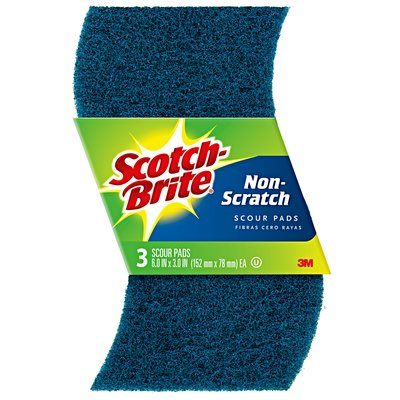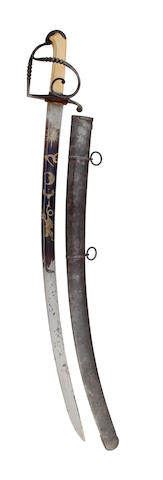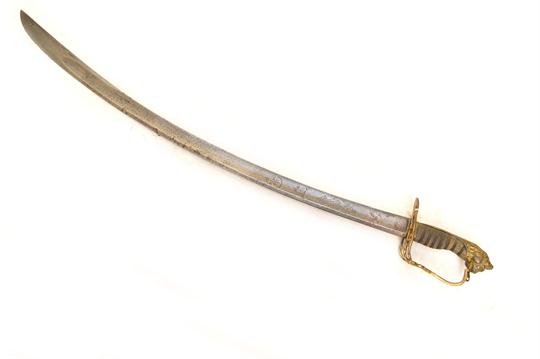Posts: 1,978 Location: Nipmuc USA
Thu 18 Jan, 2018 4:24 am
Welcome aboard Scott
It looks ok to me. The blade etching looks interesting. It is hard to tell what the covering might be. Sometimes varnish was used to preserve blades. You might try using acetone on the metal but if the coating is also on the leather, that can cause some issues. Use whatever solvent you use on a pot and let it soften the coating, then to be scrubbed off with copper, bronze or even fine steel wool. I use copper kitchen scrubbies and the blue plastic Scoth-brite looking thingies. removing whatever may be coating the grip may become problematic, proceed with utmost gentleness.
Some pictures of the overall in profile would be neat to see. What is the overall length (in a straight line) and how long is the blade?
Runkel, of Solingen, exported swords and bare blades to England and actually had an operation/sales there. You may want to cross post this over to
http://www.swordforum.com/forums/forumdisplay...word-Forum as there are many British collectors over there.
Cheers
GC


